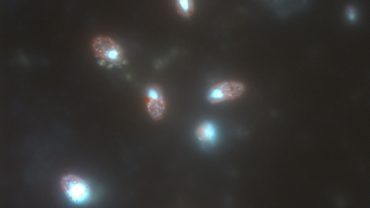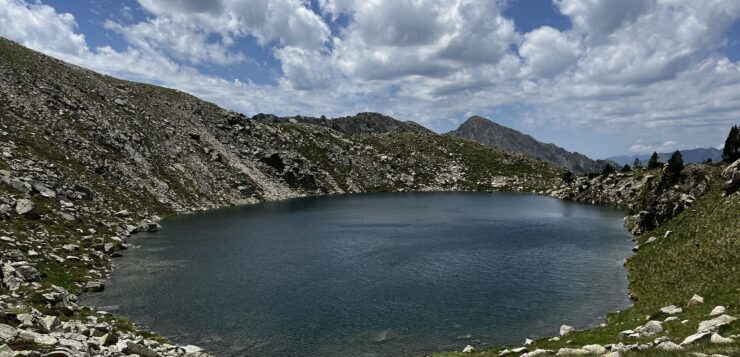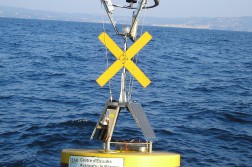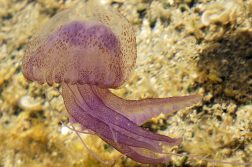A study recently published in the Journal of Ecology describes the communities of algae and cyanobacteria in 79 lakes: it explains how they are distributed and identifies the main factors that condition them. In addition to providing this ‘radiograph’ of phytoplankton, the research reveals inflection points: thresholds – in water hardness, phosphorus concentration, and related to the presence of fish – from which the dominance of one or the other group of plant plankton is reversed.
The article Nonlinearities in phytoplankton groups across temperate high mountain lakes is the result of research carried out by scientists from CEAB-CSIC in 79 lakes of the Pyrenees. These lentic or stagnant waters share the fact of being located in the Alt Pirineu Natural Park and the Aigüestortes and Estany de Sant Maurici National Park. In turn, they present numerous differences among themselves, from the altitude where they are located, their size and depth, the geological characteristics of the terrain, or the flora and fauna of each area.
By measuring environmental parameters and using advanced techniques for analyzing organic pigments to characterize phytoplankton and study its dynamics, the team has discovered patterns that are detailed in the scientific publication.
The 3 factors that most condition phytoplankton
It has been observed that the factor that most influences the composition and distribution of plant plankton in Pyrenean lakes is water chemistry, more specifically, the degree of water hardness defined by the calcium concentration. In this sense, it is necessary to consider the biological distinction between hard waters – more favorable for diatoms and cyanobacteria – and soft waters – dominated by chrysophytes and chlorophytes. This parameter depended mainly on geology, the type of rocks in the basin.

The second factor that most conditions phytoplankton is trophic status defined by nutrient concentration in the water and by the density of small planktonic crustaceans. The study also reveals the threshold concentration of phosphorus from which there is a significant change in the characteristics of phytoplankton, shifting from the dominance of chrysophytes in very oligotrophic conditions to cryptophytes and chlorophytes in ponds with more nutrients.
The third factor is the presence of fish in the ponds. Although less significant than the other groups of variables, these animals introduced by humans for recreational fishing influence the composition and density of phytoplankton, favoring the proliferation of diatoms, giving a greener color to the water.
The research reveals that responses to these environmental factors are nonlinear, given the numerous interactions between organisms and elements that occur in ecosystems. Especially when the thresholds identified as inflection points are exceeded, at which changes precipitate.
High mountain ponds: “sentinels” of global change
Teresa Buchaca, lead author of the article, explains that “this is an exceptional study both for the scale it covers, with very broad environmental gradients, within the lake district of the Pyrenees, and for providing reference information that can allow for deeper exploration of more specific aspects, either experimentally or as a starting point for measuring the effect of global change.”
Not only does it expand what we knew about the phytoplankton of the ponds in this large lake district, but it also identifies the factors that weigh the most. “This information can also feed the formulation of new hypotheses and guide the observation of long-term monitoring studies. Additionally, it can be very interesting for its management and conservation. Knowing which environmental variables should be monitored, seeing that there are some – like the presence of fish – where we can intervene very directly… these are insights that can be very helpful for the conservation or restoration of these ponds,” adds the researcher.
The scientist recalls that phytoplankton is at the base of the food chain and also plays a key role in the global carbon cycle. The different functional groups of phytoplankton, characterized by distinctive traits, also impact other biogeochemical cycles such as those of nitrogen, phosphorus, and silicon. The balance of the ecosystem depends on them, therefore. Moreover, she emphasizes that “monitoring alterations in phytoplankton and the environmental factors that cause them can help identify systemic changes and prevent or reverse them.”
The research also focuses on the role of high mountain ponds as “sentinels” of global change. Due to their characteristics (such as altitude and the fact that they are little altered by human hands), phenomena such as rising temperatures, decreasing precipitation, or atmospheric dispersion of pollutants and their effects can be observed early and clearly. Likewise, it reminds us that they are very sensitive points to these alterations and require monitoring and specific protection and restoration actions to continue being a reservoir of life and a key piece for the health of the planet.




